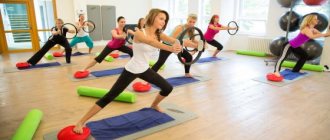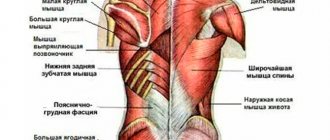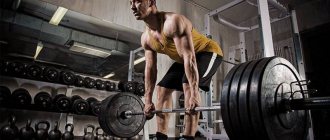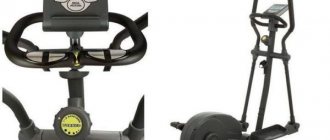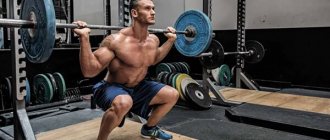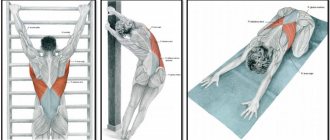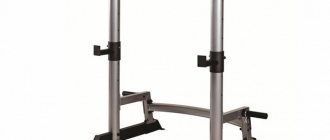Hello everybody!
Today we will get rid of pain in the spine with the help of simple asanas! Twists in yoga are one of the most famous exercises that can be performed in any position, both standing, sitting and even lying down.
Asanas allow you to gently twist the spine, which will reduce pain and relax the muscles along the spinal column. Such exercises have taken their rightful place in such a gentle practice as yoga therapy.
In general, crunches are a very useful exercise for the whole body. The main thing is to do them correctly! Daily practice will help you rejuvenate your spine, and as a result, your whole body. Simple twists can be performed even if you have never done yoga.
Rules for performing spinal deflections
Twists belong to a group of exercises with a high level of injury risk. It is advisable to at least initially perform asanas under the guidance of an instructor, so as not to accidentally harm yourself.
Precautions when performing twists:
- Fix the pose. When the twisting is brought to the final pose, it must be fixed, return to the starting position, and only then repeat the twisting in the other direction.
- Don't wave your arms. The main emphasis in twists falls on the legs, and the hands only help direct the body in the right direction. During the turn, they should be pressed to the body. You should not stretch your arms to the side to increase the deflection - this can lead to strain in the lower back muscles.
- Don't get up too quickly. If twists are performed sitting or lying down, after completing the exercise, you need to remain in the original position for a few minutes, then get up and stand straight for a minute, and only after that the exercise is considered completed.
- Gradually increase the deflection. Correct twist turns the body a quarter turn, but for the first two months of training, a turn of 5–6 cm is sufficient.
- Don't tilt your head. When turning the body, the neck must be turned following the body, the head must be kept straight and not tilted towards the shoulder. You cannot bend your chin to your neck and pull your head into your shoulders.
Before performing twists, the muscles must be warmed up with a short warm-up, including bending, swinging and lunging. The asana complex is completed with Shavasana.
Torso rotations
Turning the body to the left and to the right is harmful. But these harmful exercises are only harmful when you do them at a fast pace.
The fact is that when you turn your torso to the side at a fast pace, after your permissible amplitude of rotation (twisting) of the spine ends, you will not be able to stop because your body will continue to move by inertia.
This will place a large torsional load on the intervertebral discs, which can lead to damage (in the thoracic and lumbar regions). If you perform this exercise, then do it at a pace below average (counting: one, two - in one direction, three, four - in the other).
And one more thing: do not push against anything in order to turn harder. This will protect yourself. In general, it is better to do other, safer exercises to warm up the lumbar and thoracolumbar regions.
Benefits of Regular Exercise
Every day, the spine is subjected to enormous stress. It supports the body in a horizontal position, while simultaneously coordinating all movements, bending and turning. If you measure height in the morning and evening, you will notice that in the morning a person is 1–2 cm taller than in the evening. This occurs due to compression of the vertebrae: they sag under their own weight, the cartilage layer becomes thinner and the spine becomes a little shorter. Mobility is reduced and people find it difficult to bend and turn after a long day of work in a sitting position.
If you do not pay enough attention to the health of the spine, over time, decreased mobility will become a constant problem, pain, scoliosis, and osteochondrosis will appear. Twisting asanas can help prevent the development of diseases.
Benefits of regularly performing asanas:
- gentle traction of the vertebrae;
- gradually straightening the spine;
- removing muscle tension;
- prevention of salt deposits;
- formation of correct posture.
In order for crunches to be beneficial and not complicate the course of existing diseases, you need to perform the exercises daily.
Yoga therapy for the spine. Exercise therapy for protrusion and hernia
The yoga twist described above is often used as part of a warm-up before practice. You can even just start your morning with it, using it to restore mobility to your spine. In yoga therapy for the spine, it can be either the only exercise or part of a holistic yoga therapeutic set of activities, tailored to your health condition.
In yoga therapy for the spine, the optimal starting position in which twists for the spine are performed is considered to be lying on your back or standing on all fours - in the Cat pose, Marjariasana. When the spine is horizontal, the axial load is removed from the intervertebral discs. In these positions, we have access to not only twists for the spine, but also other, various therapeutic effects.
Subscribe to my newsletter
and receive new blog releases directly to your email inbox!
Types of twists
The main twists in yoga are performed while sitting, but there are also lying and standing asanas. You need to start with simple poses, gradually moving to more complex ones. Twists recommended for beginner yogis include:
- Basic twist. You need to sit on the floor, bend your legs and cross them, as when performing the lotus position. As you exhale, begin to turn your body while moving your right arm back. The palm of your right hand should rest on the floor, and leave your left hand on your hip. The twist can be deepened by turning the housing a quarter turn. Along with your back, you should turn your head, looking over your shoulder. After holding the asana for 10 seconds, you need to return to the starting position and repeat the twist in the other direction.
- Marichiasana. Sit down, stretch your legs straight. Bend your right leg at the knee, pressing your foot firmly to the floor. With your right hand, lean on the floor behind you - this makes it easier to maintain balance. Rotate your body while simultaneously placing your left hand behind your bent knee. Fix the pose and repeat the movement in the other direction. When performing a twist, you should not raise your shoulders; they should be relaxed. If you can’t get your hand behind your knee, you can simply press it to your thigh.
- Bharadvajasana. Sit up straight, bend your legs and pull your knees towards you. Place your feet so that both shins are on the floor and your heels point to the left. Turn the body to the right side. You can help yourself with your hands, directing the movement. Place your palms on your knees or place your hands on your back and place your palms on your lower back. Twist 5-6 times in each direction.
- Difficult Marichiasana. Take the lotus position - sit up straight, bend your legs, place your feet on your thighs. As you exhale, bring your right leg out from under the knee of your left leg, placing your foot on the floor. The heel should remain on the thigh. Bend your left arm at the elbow and grab your right knee. Place the wrists of both hands behind your back and interlace your fingers.
All movements must be performed very slowly. If during twisting the pulling sensation in the muscles suddenly gives way to acute pain, you need to return to the starting position as carefully as possible, go to Shavasana and lie on the floor for 5-10 minutes.
Harmful exercises for the knees Harmful exercises for the back Harmful exercises for the spine
How to avoid pulling muscles during physical education, hurting your back, and harming your health.
Before summer, many of us want to get our figures in order, and therefore begin to show remarkable physical activity in order to have time to prepare for the beach season.
And in general, these initiatives are very commendable. However, after some time, we suddenly begin to notice that for some reason our health has worsened: our back begins to hurt, we suffer from headaches, and stretched muscles make themselves felt.
Attention: the photos below show exercises with errors!
We all know that physical activity is good for health. It strengthens muscles, tendons and bones. But not all exercises have a positive effect on the body. Improper execution of even normal charging can lead to serious consequences.
For example, everyone knows that any exercise should begin with gentle exercises: gradually stretch the muscles, slowly bend over. There should be no sudden movements. Only after such a warm-up should you move on to more intense gymnastics. But it also has its contraindications.
Exercises for the neck should be done with special care. Head turns should be smooth. In the neck area there are large vessels that supply the brain, and they should not be allowed to become pinched and cause the vertebrae to shift.
Harmful exercises for the back and spine
1. Lumbar backbends are contraindicated for those who already have back problems. Only forward bends in a lying position are good; they stretch and relax well.
Excessive range of motion is unacceptable in exercise therapy for spinal pathologies
The well-known saying “Physical education heals, but sport cripples” can be rephrased as “Proper physical education heals, but incorrect physical education cripples.” Indeed, physical therapy (physical therapy) can cause serious harm to health, and its classical movements will turn into exercises harmful to the spine, joints, and other body systems.
Most special exercises are performed only when there is a stable absence of pain. At the acute stage of the disease or during its exacerbation, as well as in the early postoperative period, breathing exercises and a small amount of exercises affecting healthy joints are performed. The lesson can be carried out in the absence of high.
We talked a lot about a lot of useful exercises that will improve your health, you can lose weight, and get in great shape.
But we have never talked about what not to do in the gym, and, especially, at home.
Therefore, this article will be devoted to this very topic - harmful exercises that can cripple, bring pain to your body, and have a detrimental effect on your overall health.
So what exercises are harmful to the spine, and when does “medicine turn into poison”? will not be presented in this article, but exercises dangerous to the spine will be accompanied by photos and explanations.
Cervical region
For diseases of the cervical spine (see Therapeutic exercises for osteochondrosis of the cervical spine - a complex indicated for almost everyone), the following exercises should be performed with extreme caution. The cost of ignoring the warning is too high - fainting, memory impairment, ischemic stroke, paralysis of the arms.
Movements should not be sharp, jerky, or performed through effort or pain.
To strengthen your neck muscles, perform static exercises with tension.
Before performing this type of neck twist, it is better to get an “educational” consultation with an orthopedist or sports doctor.
While pumping your abs, keep your arms in the following positions: a) crossed over your chest; b) hands near the ears; c) stretched forward along the body.
Important! Despite the assurances of numerous private clinics and centers that treat back pathologies about the healing power of manual manipulation, WHO instructions prohibit the use of chiropractors for patients diagnosed with herniated disc and spinal joint instability.
Thoracic region
Despite the fact that pathologies of the thoracic spine are rare (see How to treat thoracic osteochondrosis at different stages of the disease), there are exercises for the spine that are harmful in their biomechanical component.
You can lean forward, but at the same time you need to slightly bend your knees and maintain the natural deflection of the spine.
With a problematic back, this exercise should be done so that the back always remains straight (green line).
In the starting positions: standing or lying on your stomach, arching your back is also prohibited.
If you need to perform movements while standing on your knees, then your back should be straight. The exception is the cervical region.
From a standing position, you also cannot lean forward on straight legs, rounding your back.
A physical therapy session should consist of 20% exercises in a standing position and 80% in a lying position.
Source: https://allsurgery.ru/2019/05/14/vrednye-uprazhneniya-kolen-vrednye-uprazhneniya-spiny-vrednye-uprazhneniya-pozvonochnika/
In what cases should you not engage in twisting?
Twists are useful for people of any age, but children and elderly people over 65 years old should not perform them. A teenager's spine is in a stage of active growth; traction can displace the vertebrae and lead to scoliosis. Irreversible changes occur in the body of older people; their bones become fragile and brittle. Twisting a spine affected by age-related diseases is dangerous: you can break the thin processes of the vertebrae and damage the spinal cord.
Most gynecologists insist that curling during pregnancy is prohibited. Strong muscle stretching can cause miscarriage. Therefore, it is better not to take risks and perform only simple asanas that do not put stress on the muscles of the lower back and abdomen.
Cobra pose
Pose to strengthen the back muscles. Lying on your stomach, place your palms near your armpits, elbows on your sides pressed to your body. Without pushing with your hands, raise your shoulder girdle and hold the pose until you feel comfortable, then return down to rest. Can be performed statically or slowly (two counts up, two counts down).
If there are no problems with the spine or overstrain, you can raise your palms above the floor; a more difficult option is to lift your legs (this should not be done if you have back pain).
shutr.bz
Contraindications for performing asanas
If you have certain diseases, twisting is not recommended. The list of contraindications includes:
- scoliosis;
- osteochondrosis during an exacerbation;
- cancer;
- spinal injuries;
- recovery period after surgery.
Temporary restrictions for performing asanas include fever and menstruation. Women during menopause should perform crunches carefully: hormonal changes put a lot of stress on them and they should not unnecessarily strain their joints and ligaments at this time.
Plank pose
A very popular and effective exercise for strengthening the entire body, especially the abdominal and arm muscles, if done correctly.
Two options for execution: on straight arms and with support on the forearms. General rules: do not bend your lower back under any circumstances - this can lead to injury! The tailbone is tucked, the buttocks are tense, the point between the shoulder blades tends to the ceiling, the upper back is slightly rounded. It is this kind of exercise that works well for the abdominal and arm muscles, but does not harm the spine.
If you do it with straight arms: place your palms under your shoulders with your fingers forward, do not block your elbow joints, they are slightly bent and directed back, push the floor with your hands. When leaning on your forearms, place your elbows under your shoulders, other conditions are identical. This option is especially recommended if there is pain in the hands or weak arm muscles. In a lighter position, you can place your knees on the floor, maintaining tension in the abdominal muscles.
Hold this pose until you feel full, don’t overload your body, it’s better to do several approaches. To rest, lower your pelvis onto your heels and stretch your arms forward.
I don’t support the hobby of doing planks for a while. This distracts attention from the sensations in the body and often leads to poor technique and the risk of injury to the lower back or wrist. If your goal is health, and not meaningless competition and wear and tear on the body, concentrate on your feelings.
shutr.bz
Tips for beginners
Before moving on to performing complex asanas, you need to prepare your body for performing twists. You should start with Jathara piravartanasana - exercises for twisting the stomach. It speeds up and facilitates digestion, relieves muscle block in the lumbar region. All variations of the asana are performed lying on your back - this is the simplest and most effective way to stretch the spine for beginners.
You cannot lie on the bare floor; you must have a thin rug under your back. It will serve as a shock absorber when doing crunches, but will not interfere with the movements. To perform the asana, you need to lie on your back, straighten your legs, and spread your arms to the sides. Legs should be bent at the knees, slightly pulled up. Without straightening your legs, lower both knees, first to the right, and then to the left. You can remain in twisting for no longer than 5–6 seconds, gradually increasing the time to 1 minute. The main thing is that the asana does not bring discomfort.
The exercise can be made more difficult by bending your legs so that your knees form a right angle. During crunches, you need to make sure that your shoulders do not leave the floor and your knees remain in a straight line. You can turn your head to follow your legs, focusing your gaze on your knees. When the asana becomes easy, you can make it even more difficult by stretching both legs. Your heels should be in line with your hips. Do not bend your knees or bend your lower back.
Exercises harmful to the spine: what not to do
Excessive range of motion is unacceptable for a diseased spine
The well-known saying “Physical education heals, but sport cripples” can be rephrased as “Proper physical education heals, but incorrect physical education cripples.” Indeed, physical therapy (physical therapy) can cause serious harm to health, and its classical movements will turn into exercises that are dangerous for the spine, joints, and other body systems.
Common Common Mistakes
Therapeutic physical movements turn into dangerous exercises if the rules of exercise therapy are violated during classes:
- Most special exercises are performed only when there is a stable absence of pain. At the acute stage of the disease or during its exacerbation, as well as in the early postoperative period, breathing exercises and a small amount of exercises affecting healthy joints are performed.
- The exercise can be carried out in the absence of high intracranial and blood pressure. Elevated body temperature, an acute period of an infectious disease, a sharp exacerbation of any other chronic pathology, poor health are direct contraindications to therapeutic training.
- The type, number of repetitions and approaches, sequence of execution, amplitude and tempo of movement, the amount of physical activity received from a specific exercise and from the session as a whole are among the indicators that must be approved by the treating specialist.
An example by analogy. The doctor wrote out a prescription to take the medicine: 3 times a day, 2 tablets, after meals, with 250 ml of water. The patient bought a drug with a similar name, drank it 5 times a day, 4 tablets, before meals, and swallowed the tablets without washing down. The conclusions are obvious.
- Each exercise therapy session should begin with a warm-up of the joints and muscles, and end with a final relaxation exercise. Even healthy, but “not warmed up” joints are easily injured, and therapeutic movements performed without preliminary warm-up will turn into exercises harmful to the spine. Excessive haste at the end of the lesson will reduce all efforts to nothing.
- You can exercise only 60-90 minutes after the main meal. Violating this rule additionally burdens the body, distracting it from the digestion process. In addition, if you have problems with the lumbar region, exercising on a full stomach can lead to an exacerbation of the pathology, since the biomechanics of movements will be different from the usual.
- It is necessary to strictly follow the “Golden Rule” of exercise therapy – if pain occurs, the session ends immediately. If the problem occurs the next time, you should consult a doctor.
A hygienic shower can be dangerous for joint health
On a note. If you take a shower, then refrain from hardening procedures, and before swimming in the pool, do not steam! When taking water procedures after physical therapy, the initial water temperature should not be lower than 29 ° C.
Exercises that are dangerous for your back joints
So what exercises are harmful to the spine, and when does “medicine turn into poison”? will not be presented in this article, but exercises dangerous to the spine will be accompanied by photos and explanations.
Lumbosacral junction
| Image | Description |
| Bend the torso to the side | If your lower back is bothering you, then you should refrain from bending to the side combined with turns. You can lean forward, but at the same time you need to slightly bend your knees and maintain the natural deflection of the spine. |
| The girl in the photo is performing one of the variations of the Bridge exercise, which is only suitable for people with a healthy spine - she arches her lower back. With a problematic back, this exercise should be done so that the spine always remains straight (green line). In the starting positions: standing or lying on your stomach, arching your back is also prohibited. | |
| Everyone's favorite exercise, the Cat (angry, happy, looking at the tail), is also on the list of prohibited exercises! If you need to perform movements while standing on your knees, then your back should be straight. The exception is the cervical region. From a standing position, you also cannot lean forward on straight legs, rounding your back. | |
| Starting positions – sitting | Absolutely all exercises that are performed in a sitting position are dangerous for the spine with lower back problems. A physical therapy session should consist of 20% exercises in a standing position and 80% in a lying position. |
